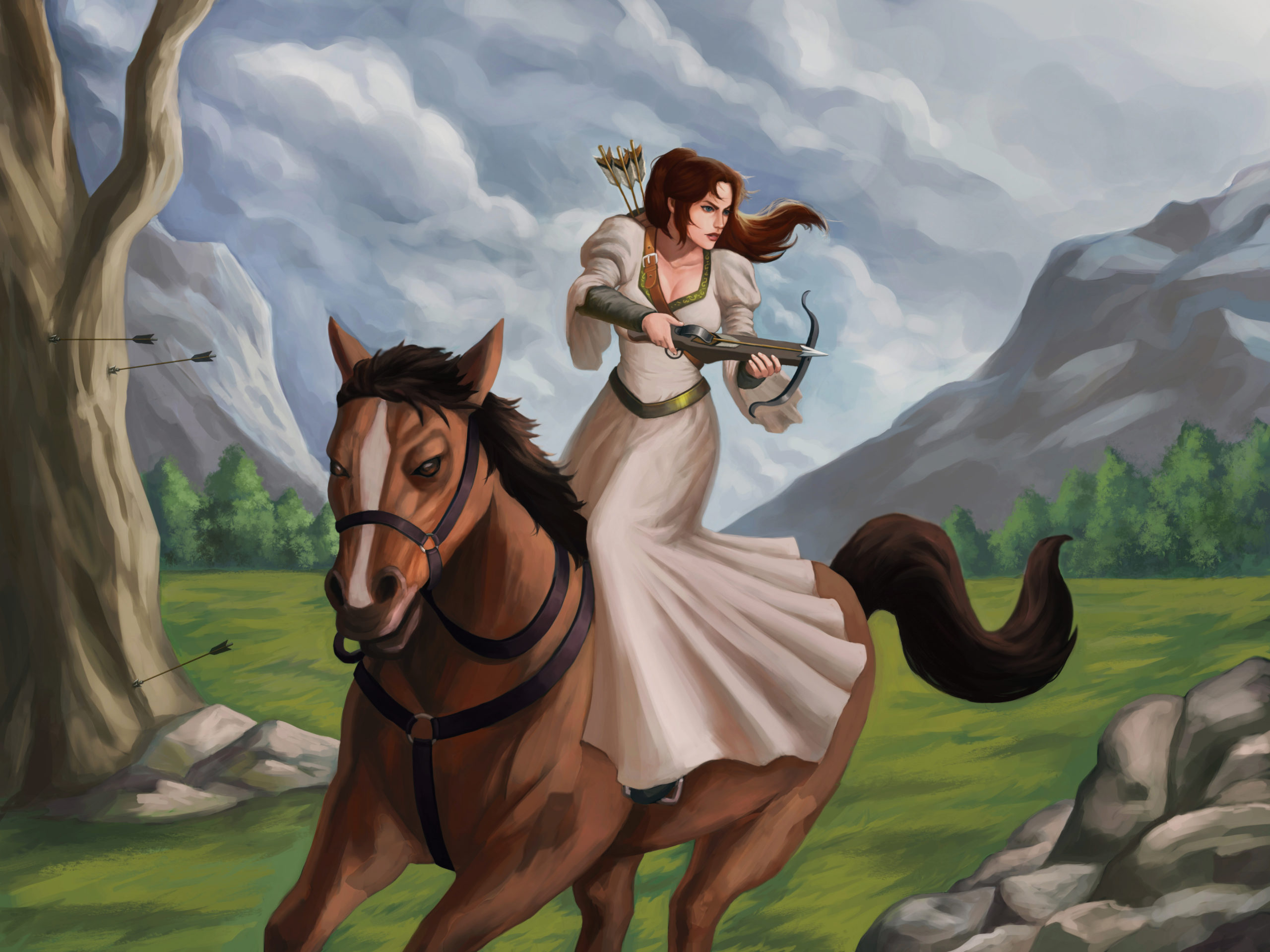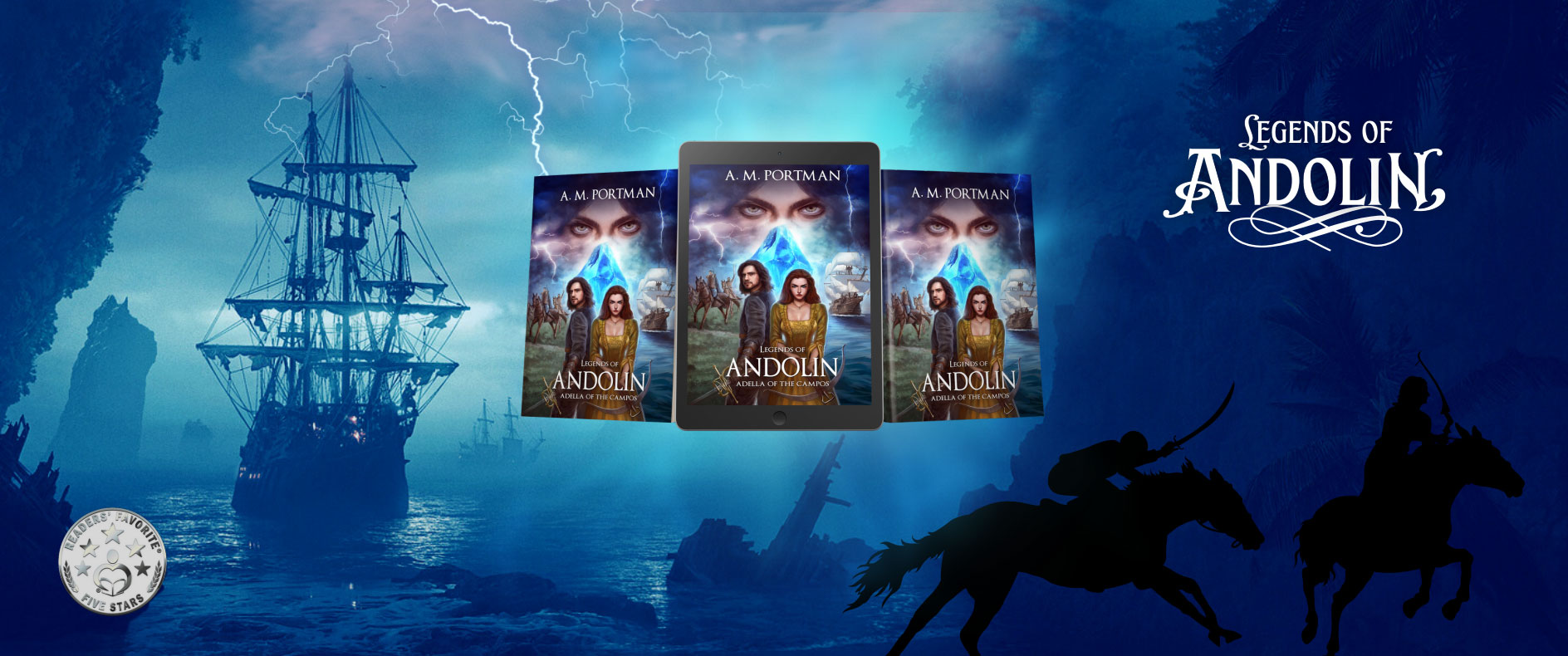
The Crossbow
Hello, everyone! Today, I’d like to talk a little about the crossbow, as it’s the weapon of choice for the main character in Legends of Andolin, Adella. Though she’s not completely a novice to weaponry when the story begins, she must acquaint herself with it when she finds one on her journey. While writing her story, I realized I had no real understanding of how a medieval crossbow loads and fires—how the bolt stays in place, and how the locking mechanism operates—and scouring the internet didn’t provide the technical information I needed to base my writing on. I concluded there was only one very obvious solution: to buy one of my own and practice with it. So, I found one on Etsy, from a shop called White Armour. I remember waiting for what felt like ages for it to arrive from overseas. When it finally came, I assembled it immediately and took it outside to practice.
After trying it for myself, I can say that one of the appealing features of the crossbow is its ease of use, even for a complete beginner. After a few practice shots, I was soon hitting my target (though not from a very great distance) an hour after I assembled the weapon. Now let’s look a bit at the history of the weapon:
The Crossbow: A Simple Weapon that Revolutionized Medieval Warfare
The crossbow can be traced back to ancient China to around the 5th century BC, but it wasn’t until the Middle Ages that it gained prominence in Europe. The crossbow revolutionized warfare with its ease of use, increased power, and relatively short training required for proficiency compared to traditional longbows.
The Rise of the Crossbow
Traditional bows required great physical strength and many years of training to master—to the point that they left their mark on the archer’s skeletons—making them less accessible to the common soldier. The crossbow, on the other hand, was straightforward to operate. A soldier could be trained to use one effectively in a fraction of the time needed for a longbow, which made it useful when a kingdom needed to raise an army quickly.
The locking mechanism of the crossbow allowed for greater force to be exerted on the bolt, making it more lethal. As the technology developed, with metal lathes and goatsfoot levers, it became capable of piercing knights’ armor, which was a significant advantage in battles of the era. The crossbow’s horizontal design also allowed for aiming with greater accuracy, even for less experienced users.
Controversy and Ban
The effectiveness and simplicity of the crossbow did not come without controversy. The Second Lateran Council in 1139, under Pope Innocent II, decreed the crossbow as immoral for use against Christians. This decree stemmed from the weapon’s lethal efficiency and its potential to disrupt the social and military status quo. Knights, who had previously dominated the battlefield with their war steeds and heavy armor, could be felled by a common foot soldier with minimal training. As the crossbow threatened the chivalric order, it was viewed as an equalizer that could undermine the established feudal hierarchy.
This ban, however, was not universally obeyed, and the crossbow continued to be a prevalent weapon in warfare across Europe, though now it had developed a reputation as the weapon of choice for unlawful renegades, foreign enemies, and dishonorable mercenaries. Despite the ban and unsavory reputation, the crossbow grew to be an indispensable tool of warfare, and ushered in a new era where technology and innovation began to overtake traditional notions of honor and chivalry.
Legacy
The crossbow’s impact on medieval warfare was profound, leveling the field in accessibility to effective weaponry, which enabled common soldiers to play a more pivotal role in battles. Its simplicity and power offered a glimpse into future warfare, where skill and training would increasingly be supplemented or even replaced by technological advancements.
Despite its eventual replacement by gunpowder weapons, the legacy of the crossbow endures. It symbolizes a turning point in military history, where innovation began to reshape the battlefield, challenging established norms and heralding a new age of warfare.
The Crossbow’s Cultural Resurgence
In contemporary culture, the crossbow has emerged as a prominent symbol in films, books, and media. Its historical allure and lethal precision make it a favorite for characters portrayed as cunning and skilled. In movies and TV shows, it adds a touch of medieval authenticity, while in literature, especially fantasy, it often symbolizes the blend of strategy and ancient warfare. This enduring presence in popular culture not only keeps the crossbow’s legacy alive but also introduces its mystique to new audiences, securing its place as an iconic and timeless weapon in both history and fiction.
Thanks for reading! Until next time,
Audra


No Comments
Sorry, the comment form is closed at this time.